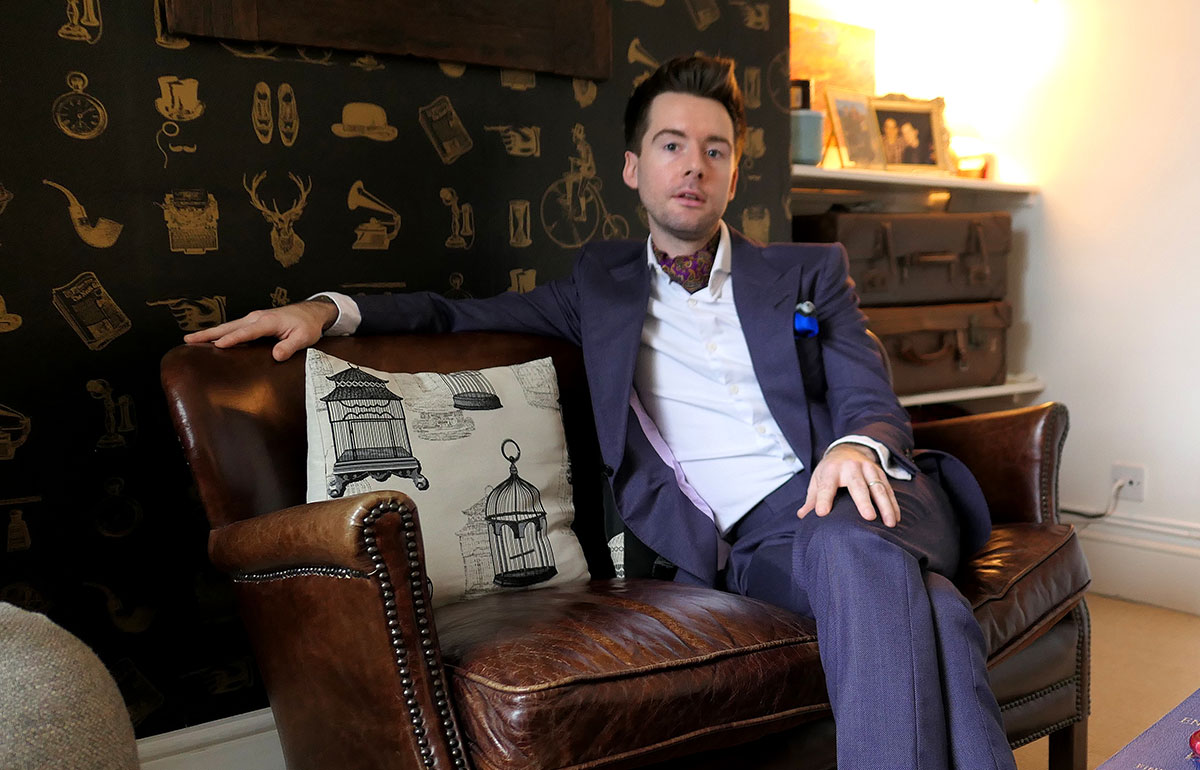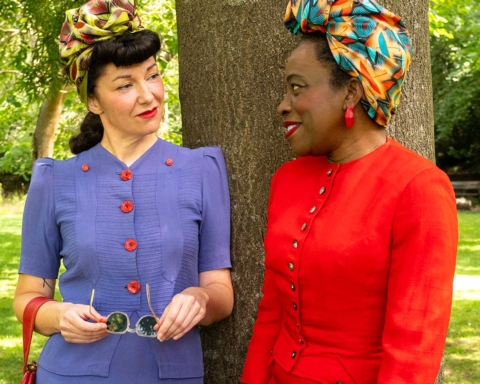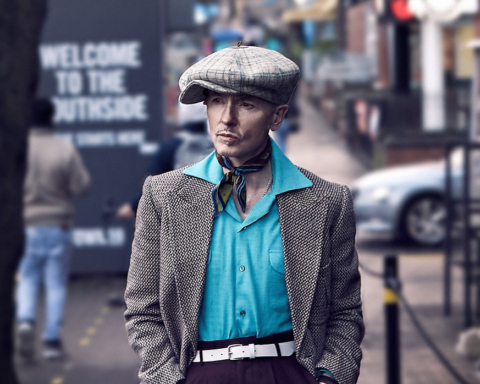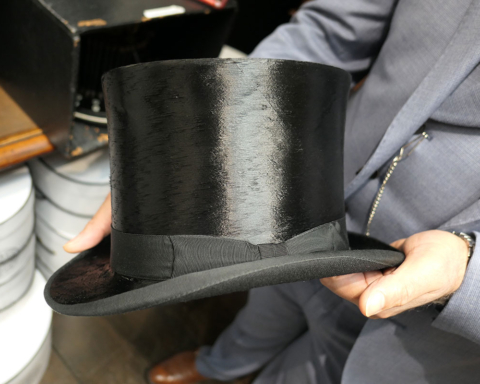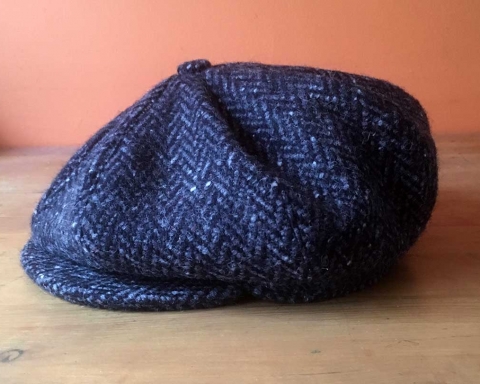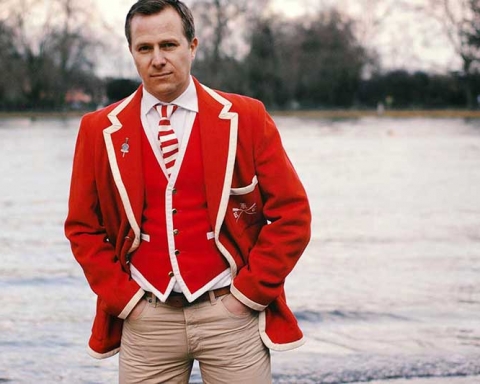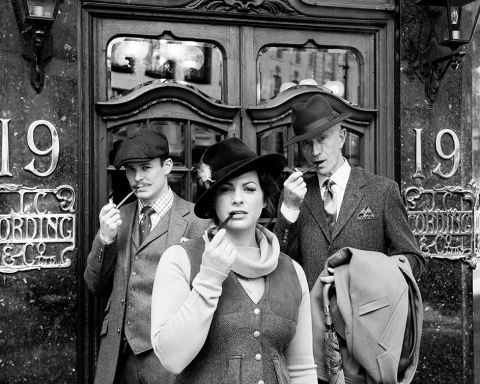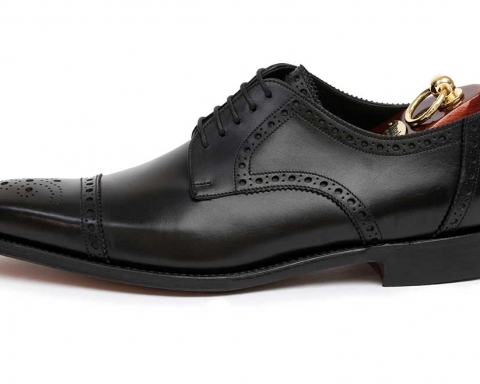Gustav Temple bespeaks a two-piece suit from bespoke tailors Pratt & Prasad, and finds that having a suit made reveals a lot more about the man underneath it than his sartorial preferences.
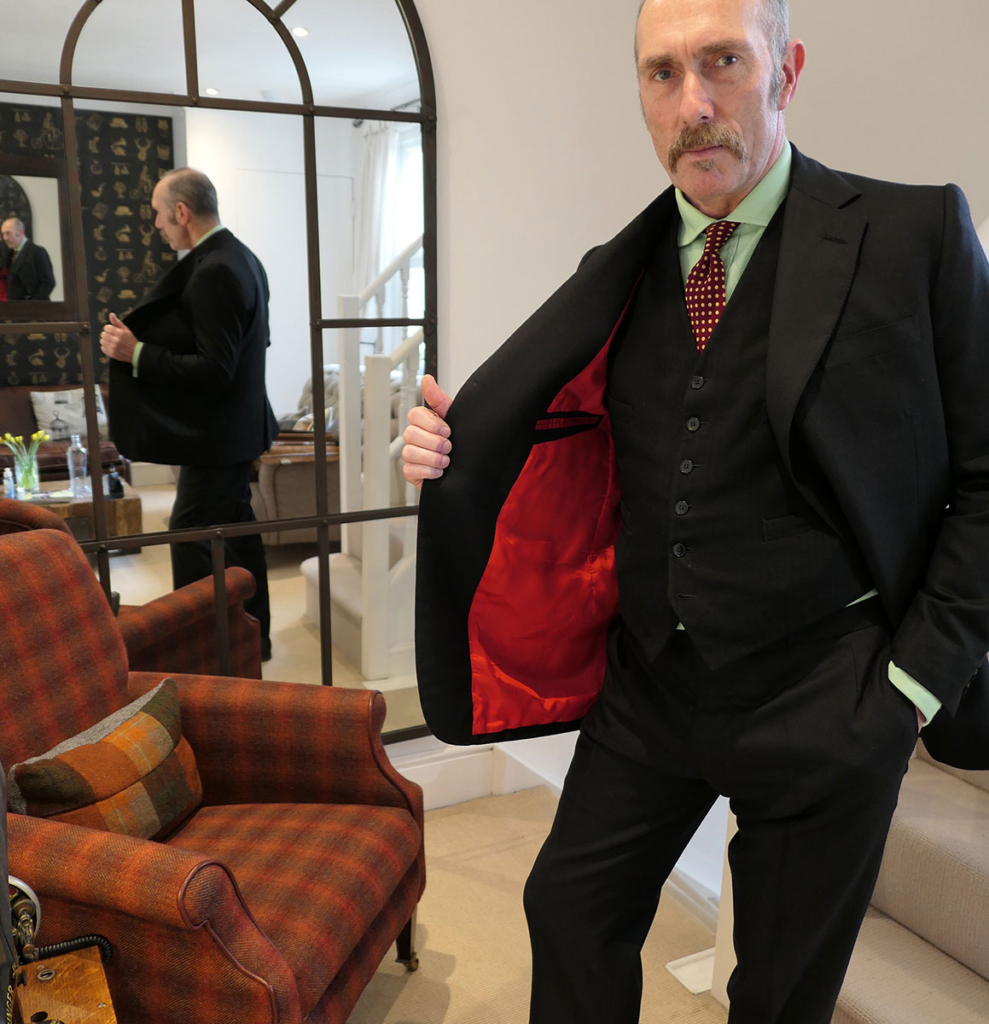
As I meander along the fully gentrified upper regions of St John’s Hill, Clapham, it occurs to me that seeing a tailor is like a mixture of entering a clothing emporium and visiting a doctor. When I relay this to Haddon Pratt, the tailor I am visiting, he concurs, adding the exception that the tailor is not going to cure your ailments, only disguise them.
Haddon Pratt, founder and head cutter of Pratt & Prasad, welcomes me at the door of his two-floor apartment on Huguenot Terrace, a grand Georgian building gracing the main thoroughfare north from Clapham Junction. Is it odd going to someone’s home for a tailoring appointment? Not when their home has been turned into a sartorial showroom and fitting room, with tailor’s dummies, piles of swatches and tape measures everywhere. The initial stage of the consultation takes place seated on tweed and leather sofas and is initially more like a counselling session. “What do you want from life, sir?” could almost be one of the questions, though not actually asked.
What does issue from the mouth of the tailor is a series of questions that delve into the heart of the matter of what one wants from one’s suit. After some deliberation on the couch, Haddon elicited from his client: “I want a plain black suit that I can wear to weddings, funerals and business meetings, and I would like it to bear some resemblance to the vintage ensemble I am wearing today.”

Under the close scrutiny of Haddon’s eagle eyes, we discover that my current cobbled-together three-piece is actually in three different shades of black, two of whose elements contain a very subtle herringbone weave. After half an hour of leafing through dozens and dozens of swatches, the selection is narrowed down to three. Then Haddon produces his magic wand – a small cardboard cutout of a suit that, when placed over the fabric swatch, suddenly gives a much stronger impression of what it might look like as a garment. With a sudden sense of certainty, a 12oz black twill by Dugdale is selected. Haddon mentions one client who spent two three-hour sessions purely selecting his cloth. “For some clients, this is their first bespoke suit and they’ve saved up all their money for it, so they want to get it right.” I breathe a sigh of relief that, comparatively, I have not drained all the life force from this patient garment-maker.
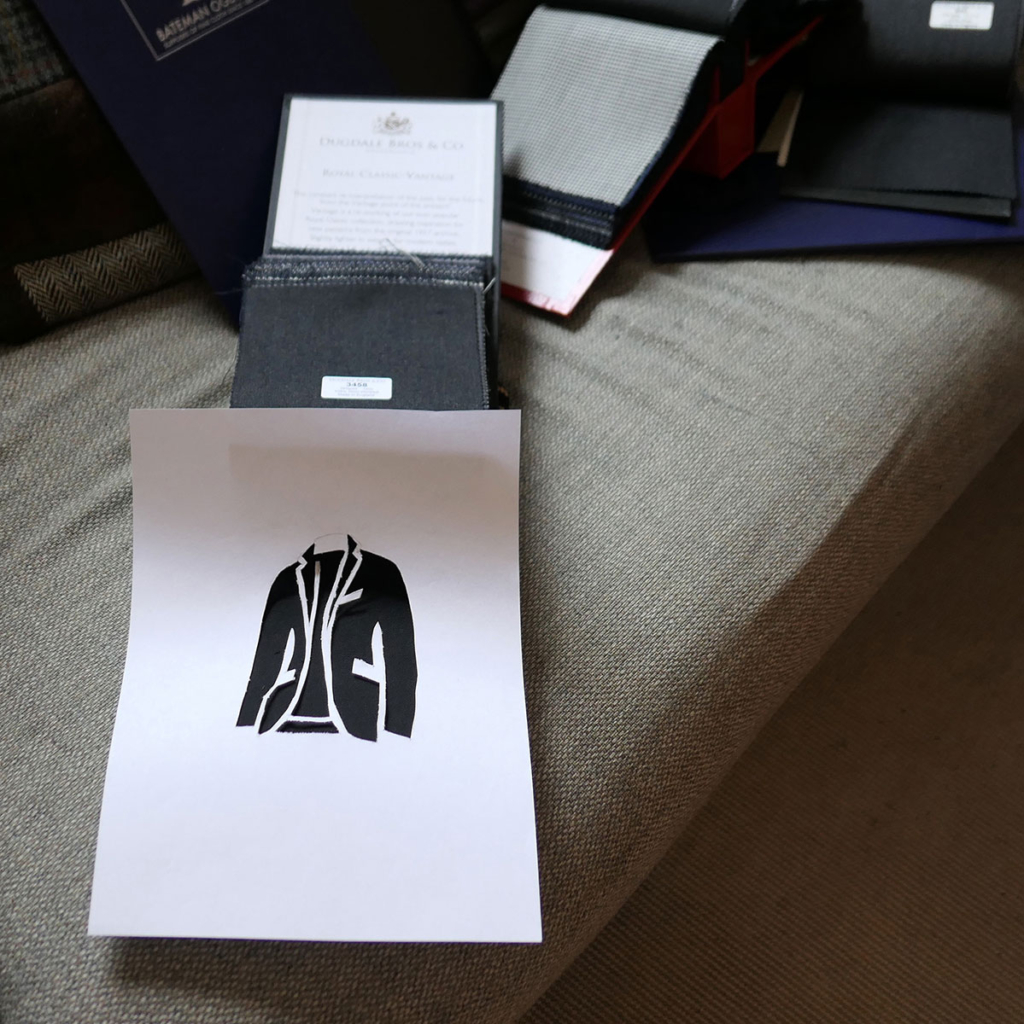
Thence to the lining. Another pile of swatches is summoned, ranging from silks adorned with skulls and farm animals to plain fabrics. Reader, I hope you will appreciate that I eschewed the former and selected a plain scarlet lining. A brief discussion ensues about how the client’s choice of lining reveals more of the true man beneath than the suit’s outer layer, bringing us back to the therapist’s couch.
And so to the measuring. Who doesn’t feel, while being measured for a suit, the weight of the years resulting in the figure under the tape measure? All those steak dinners, pints of ale, bottles of fine wine and delicious (at the time) canapes, all those occasions when going for a jog or setting foot in a gymnasium were the last things on one’s mind; they all reel into the memory like a near-death moment. Too late now, my friend. At least the result of all this is not death, but the new life that a bespoke suit can bestow.
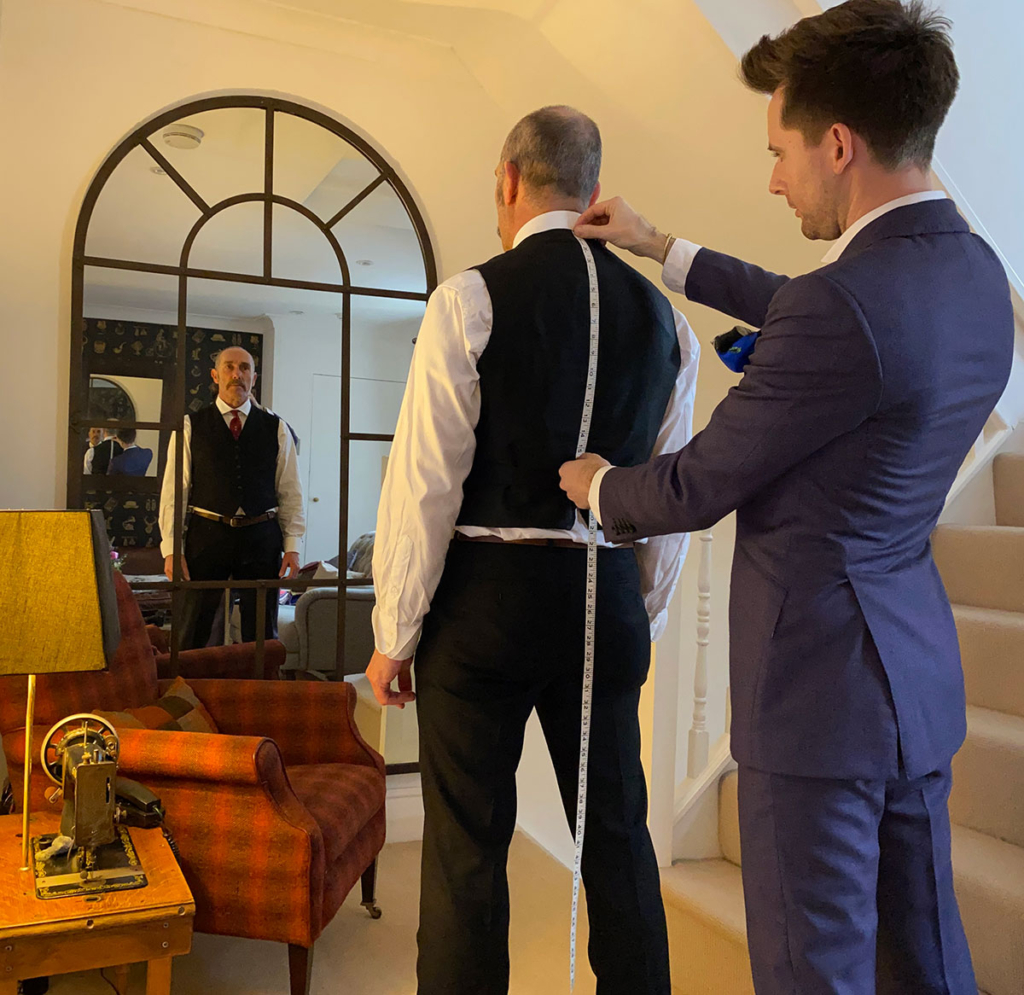
While Haddon flies his tape measure around my ruined body, I ask him about his own suit, a rather natty violet single-breasted two-piece with peaked lapels that almost reach the shoulder seam, reminiscent of Tommy Nutter. “This is one of the first suits I made for myself after going solo. I always build in these huge ‘take flight lapels’. I was trained as a cutter by Terry Haste, who had been head cutter for Tommy Nutter when he worked alongside Edward Sexton.”
Haddon hails from Redditch in the Midlands, where both his grandparents worked in the John James factory known locally as Needle Industries (the same needles they made are still used on Savile Row today). Having completed a fashion and tailoring diploma, Haddon started his career as an apprentice at Canary Wharf tailors English Tailoring, whom he pestered every day until they gave him a job. There he learned coat making, then moved to the Disguisery in central London to work as a trouser maker. There Haddon gained exposure to Savile Row, where Terry Haste offered him a job as an undercutter. This was more like a traditional apprenticeship, with the qualification at the end of it (when the cutter decides his disciple is ready) being the ability to set up on your own as a tailor. Haddon and Terry are still very good friends to this day.
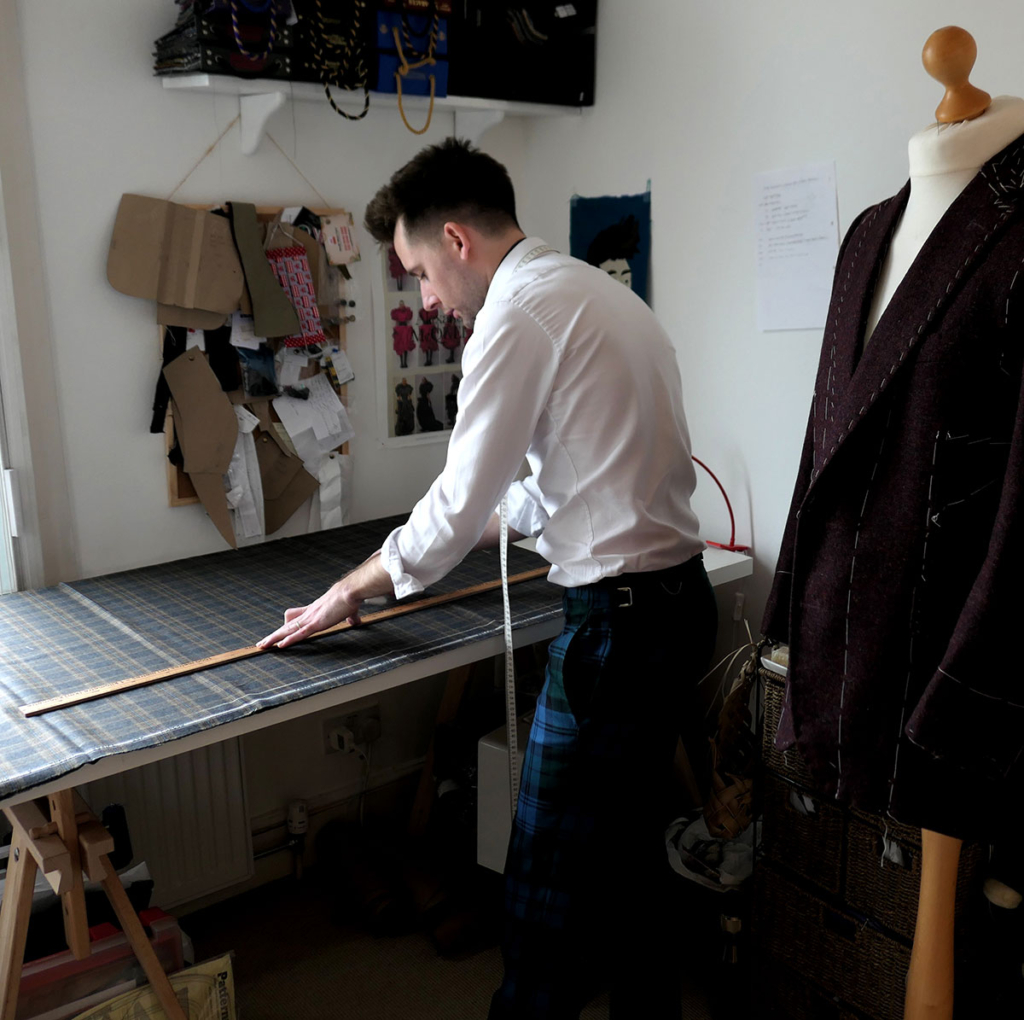
When it comes to style details, Haddon and I agree to refer to the jacket by its proper tailoring term, the coat. Lapel width merits a very long discussion, my only stipulation being that mine are not ready to take flight. Pockets and vents take us deeper into the minutae of tailoring. By this stage of the process, one has either placed one’s trust in the tailor or not. And I had, so took Haddon’s lead on the single-vent option with traditional straight, flapped pockets. I did however insist on a ticket pocket, which I genuinely use for rail tickets, which thankfully have not changed format since the 1950s.

Armholes are another facet of vintage clothing that clashes with modern sensibilities, and indeed temperatures. The middle-aged western male of the 21st century can be defined by always being too hot and always needing a lavatory. No amount of decent tailoring can fix the latter, but the armholes of the coat may be cut in such a way that there is plenty of room for the armpits to breathe, without sacrificing a clean armhole line. As Haddon explains, you can always go deeper but not shallower once the armholes have been cut, because naturally you can’t put fabric back on. During further discussion about the cut of the coat, we establish that I tend towards the drape cut of Anderson & Sheppard as opposed to the sharper lines of Huntsman. This Haddon chap really knows his Savile Row and such references are received with a nodding familiarity.
Trousers: flat-fronted, high-waisted, slant pockets, no turnups. There is of course a place for a pair of fishtail waisted pantaloons with button fly and turnups in a gentleman’s wardrobe, but my wardrobe is already full of those.
THE FIRST FITTING
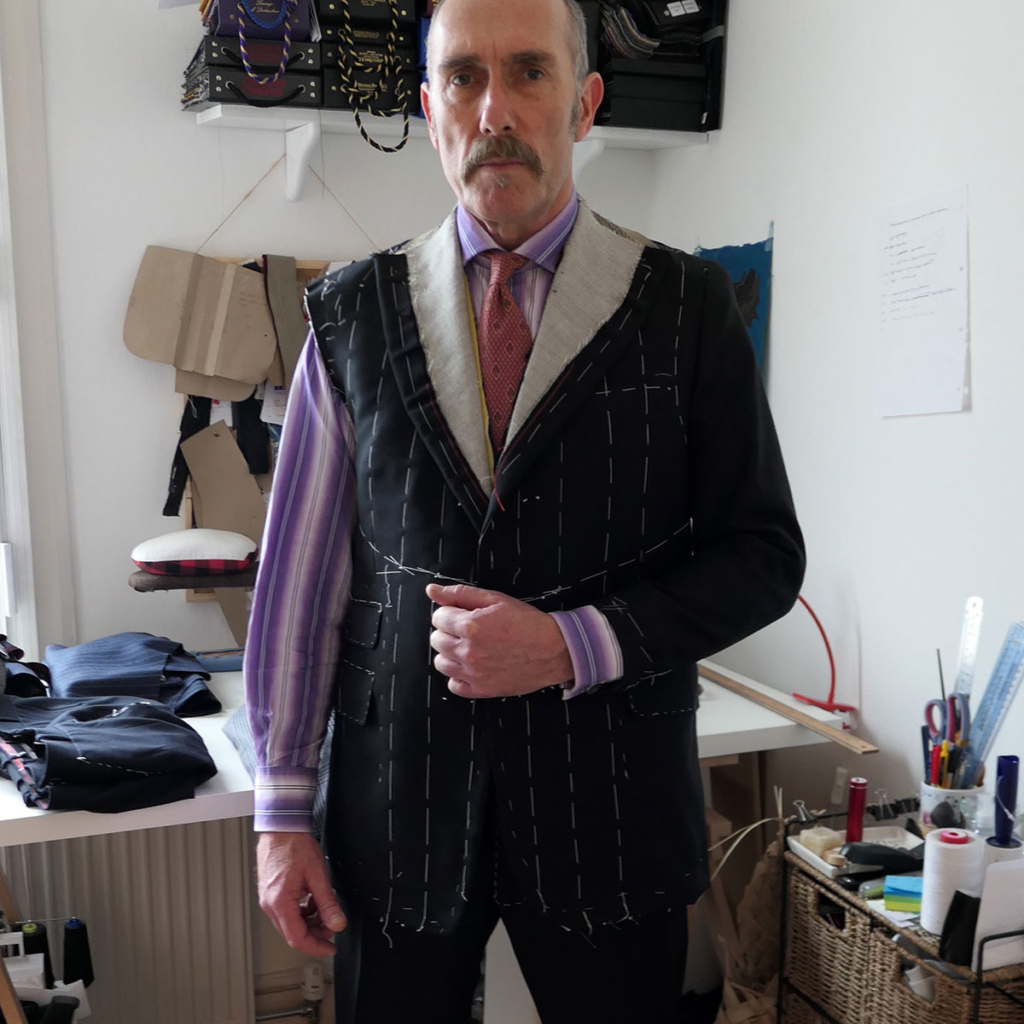
The baste stage is a kind of cloth sketch of the suit one is bespeaking. It bears only a passing resemblance to the finished article, but this means that most of it can be adjusted, bar the fabric. This is the moment where your choice of swatch reveals itself as a half-built garment, and you can even catch a glimpse of the lining inside the pockets. I can already tell that this is the suit I wanted. It has the right shade of black, and the right weight of cloth to give it a decent drape. Haddon also adds that heavier fabrics require less maintenance.
The adjustments are made: a wider armhole here, a nip and tuck around the trouser there, sleeves lengthened to reveal precisely 3/4 inch of shirt cuff. The large baste stitches all over the coat will be replaced by fine stitching; they are only there to hold the whole thing together as loosely as possible, giving plenty of room for changes. Once, a new client took a shine to the huge stitches and asked if they could be left on the pockets. Haddon and I both raise our eyebrows and sigh.
After a second fitting, during which final adjustments were made to the suit, already emerging from its baste stitching and taking true shape, I paid my fourth visit to Pratt & Prasad, wearing the same black vintage suit I had worn to the first consultation. Like a schoolboy on his way to get a new pair of shoes, excited that he would be dumping the old ones in the shop and walking out in a brand-new pair, I knew this would be the last time I would wear this ensemble of mismatched blacks and weights of fabric. Goodbye, old friend, I said to it, brushing yet more lint off the lapels; you have served me well but now the Platonic shadow in the cave is to be replaced by the Real Thing.
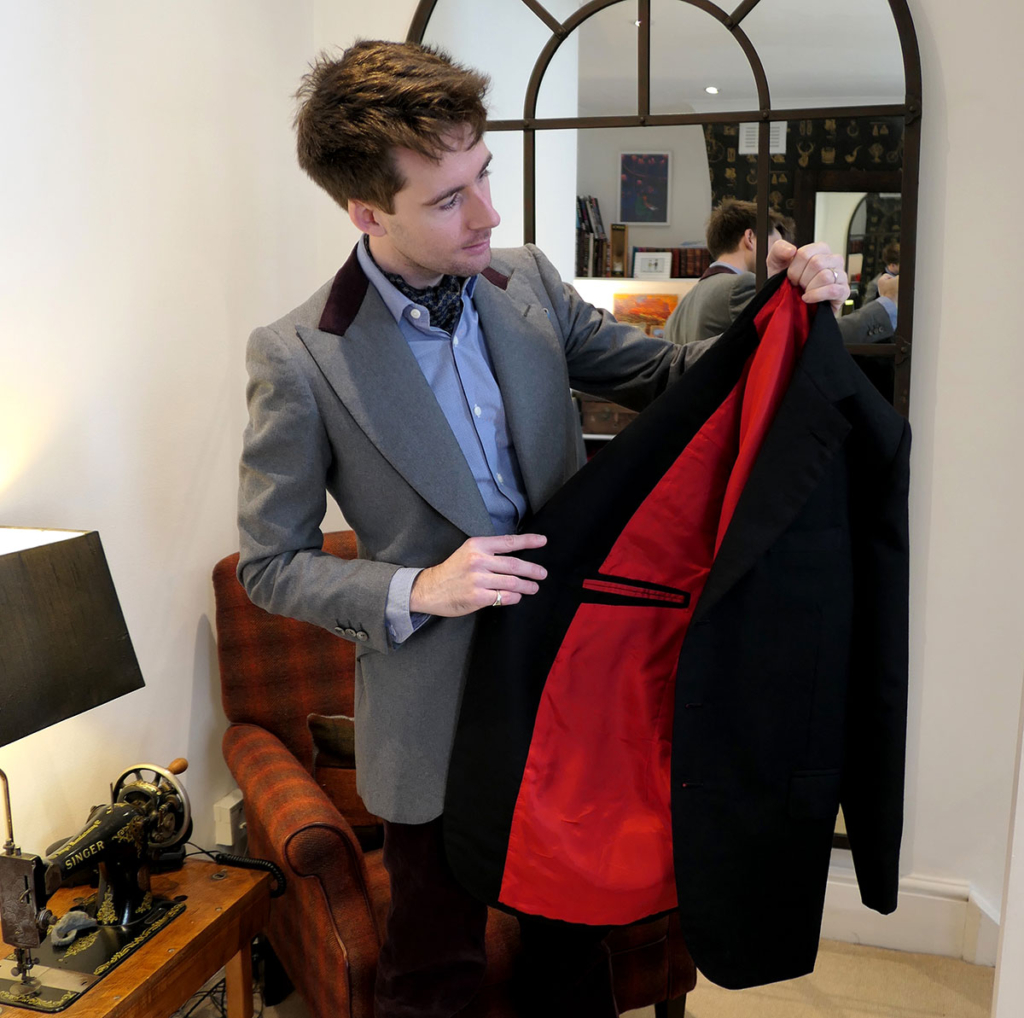
Haddon was nearly as excited as I was, forgetting to offer me the usual cup of tea in his haste to show me his creation. I saw it immediately; a lone black figure nestled among the bright violets and pastel blues of Haddon’s more adventurous clients.
A plain black wool suit like this only really comes to life when it’s put on. And it wasn’t only the suit that sprang into life. The trousers slid on like a pair of silk pyjamas, and when I put on the coat, my carriage was instantly more erect, almost as if some form of orthopaedic back brace had been applied. Haddon proudly pointed out some of the key features, such as the luxurious roll on the lapel (compared to the flat, lifeless lapels on the vintage coat); the generous armholes, whose generosity was entirely concealed from the outside; the tightly jetted pocket flaps; the vampiric sweep of the scarlet lining. If I were a different type of person I would have given this talented tailor a high-five. Instead, I merely nodded, knowing as well as Haddon did that this suit would alter my bearing in the world.
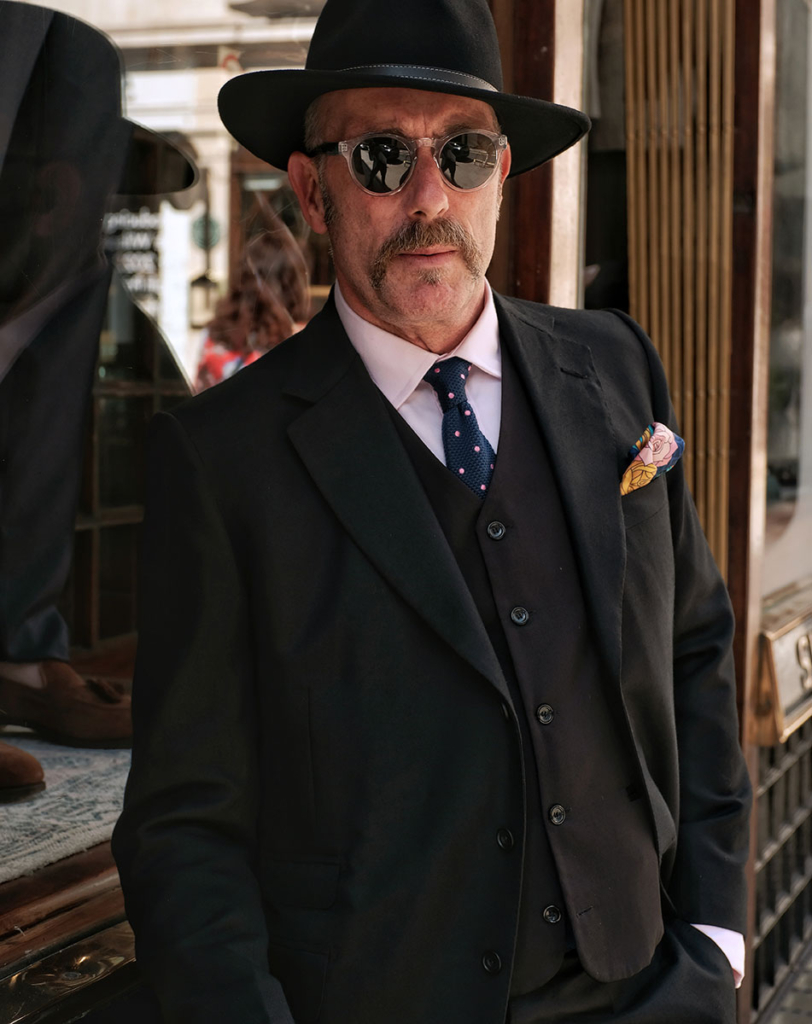
The street welcomed a different man when I left Pratt & Prasad. A slightly taller, more elegant man with a more confident step. Every movement in a bespoke suit is a pleasure; every gesture rewarded with a gentle yielding of the cloth; as if the suit is asking its wearer: what do you want to do next, sir, and how can we assist you? No matter how well a vintage garment seems to fit, there is nothing quite so harmonious and satisfying as wearing a suit that no other man will ever inhabit so precisely.
www.prattandprasad.co.uk

